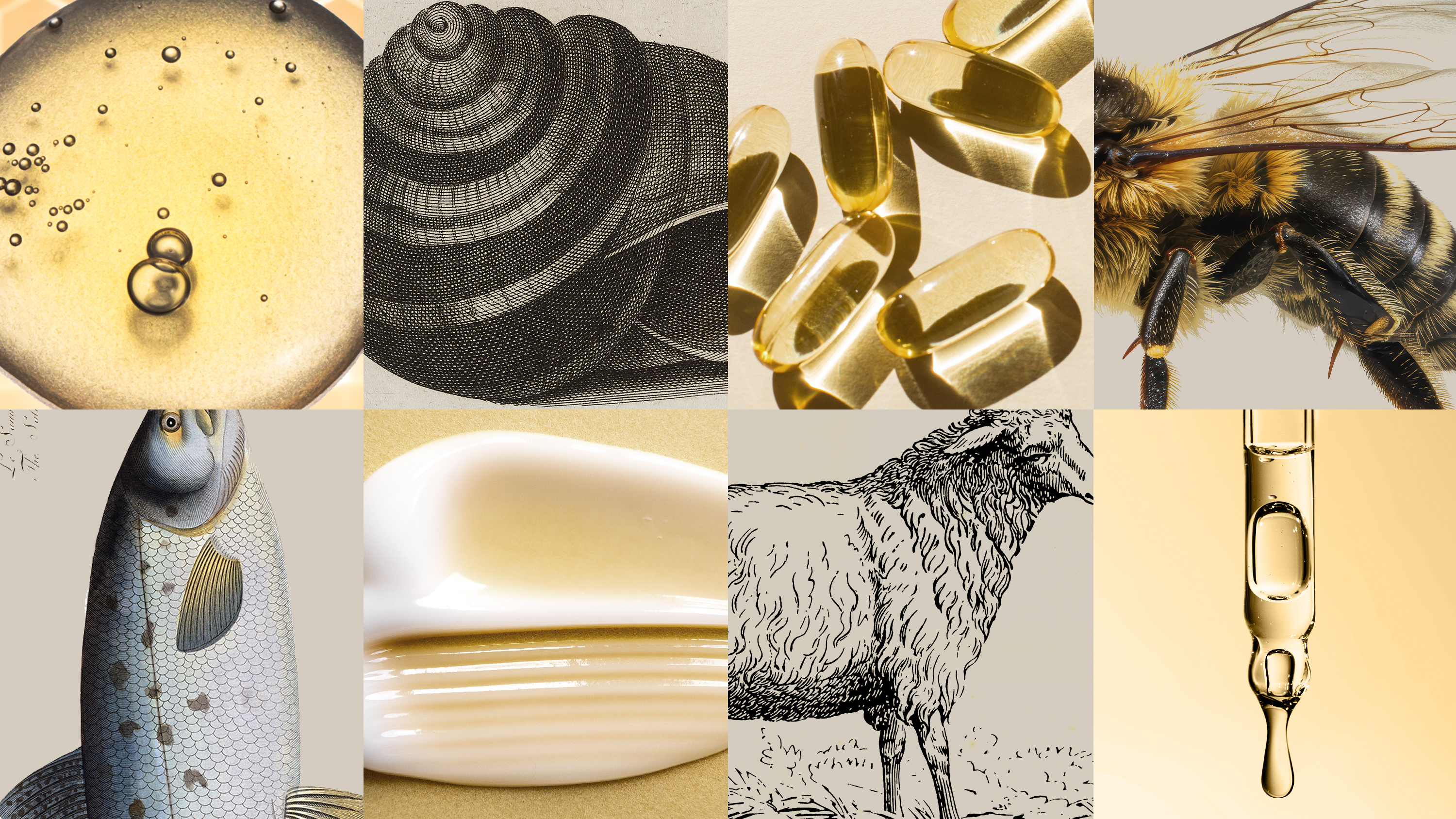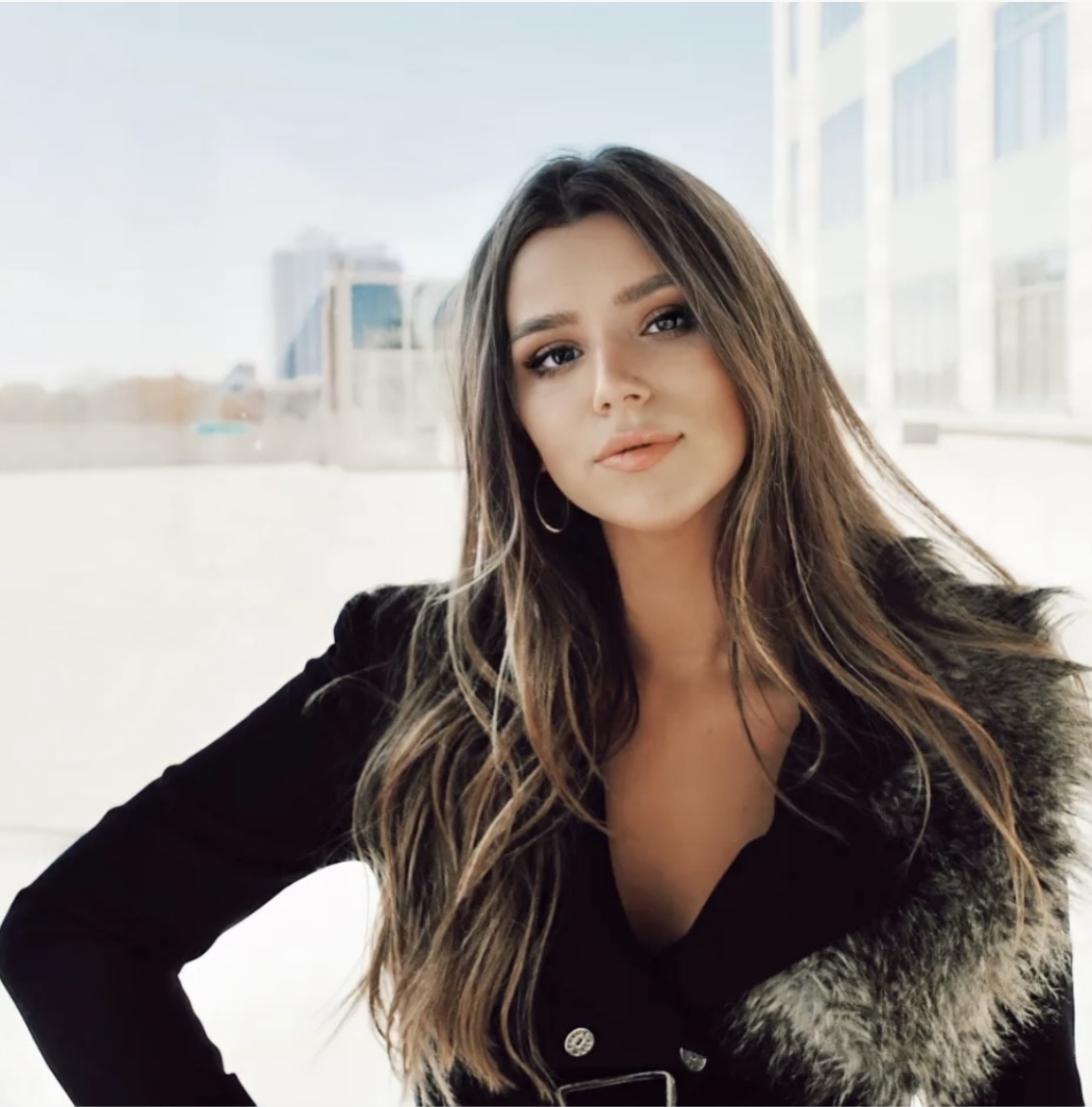Skincare’s Wild Side
From salmon DNA to snail mucin, beauty’s next big trend is all about animal-derived formulas. But are the results as eye-popping as the ingredients?


The first sign appears on TikTok. A hot pink face serum going viral. Not for its luxury branding or celebrity founder, but because its star ingredient is derived from salmon sperm. Then there are the videos of content creators coating themselves in beef tallow moisturizer (for hydration!), snail mucin essence (for glow!), jellyfish-derived collagen (for smoothness!). In my inbox, an invite for a “Lamb Lift Facial.” The treatment, offered at a top-tier New York City medical spa, utilizes an extract from a sheep's placenta to “regenerate skin on a cellular level.”
While bottling up animal-derived formulas certainly sounds wild, it’s actually a natural step in our obsession with “clean” skincare. The “green” and “non-toxic” era—born out of a craving for natural ingredients—collapsed under the weight of its own contradictions in the past decade. Brands prophesized plants, essential oils, and ingredients you could pluck from the earth. But confusing marketing, vague definitions of what was in the products, and a lack of regulation, often left consumers feeling unsure of what they were slathering on their skin—and if it actually worked.
Today’s animal-derived active ingredients build on that same desire for a connection to nature, but take it one step closer to us. They’re made from biological substances that share similar molecular makeup as our own skin—closer to human physiology than anything that grows from the ground. These elements, such as lipids, peptides, and even DNA, are compounds already present in our bodies, so they feel instinctively more compatible. “It’s one reason consumers are drawn to these kinds of ingredients,” says Karan Lal, D.O., a board-certified dermatologist in Arizona. “Most of these products are biosimilar, meaning they try to do what our natural compounds do.”
That similarity is also what many say makes animal-derived ingredients so effective, with products touting everything from glassy, glowy skin to a real reduction in fine lines.
Most of these products are biosimilar, meaning they try to do what our natural compounds do.
While beauty’s primal phase may sound novel, it’s not new. Twentieth-century Russia gave rise to placenta creams; ancient Egyptians prized bee venom; and South Korea—long a global incubator for skincare innovation—has been formulating with animal extracts for years, with the studies to support their results, says Charlotte Cho, founder of Korean beauty retailer Soko Glam.
“Koreans are curious and open to new ingredients as long as they work," she says. Snail mucin, for example, “is a long-standing, science-backed ingredient with clinical studies proving its efficacy.”
Seoul-based dermatologist Jae Yong Ban, M.D., explains that the effects of salmon sperm have been clinically proven and supported by published studies, as well. And a 2019 clinical trial found that a Singapore-based lab's patented protein mix derived from red deer umbilical cord lining significantly improved skin elasticity and fine lines—a sign that the ingredients aren’t just eye-popping, their results are too.
Get exclusive access to fashion and beauty trends, hot-off-the-press celebrity news, and more.
I figured—if it’s regenerative enough to grow life, imagine what it could do for my complexion.
In the U.S., the landscape around clinical trials is different, with many of the ingredients not having undergone FDA approval. Not because they’re unsafe necessarily, but because the agency doesn’t pre-approve cosmetic ingredients the way it does drugs. Unless a brand voluntarily subjects a formula to drug-level testing—a process that can take years and cost millions—these products sit in a regulatory gray zone. Innovation in beauty often outpaces oversight, leaving the U.S. slower to adapt as new science emerges abroad.
For those who try it, though, the results speak for themselves. Liz Slattery, 32, a vice president of a tech company, recently booked a “Lamb Lift Facial” at TREAT Med Spa in New York City, where sheep placenta extract promises to firm and smooth skin. “My jawline felt tighter, fine lines softened, and my tone looked smoother,” she says. “I figured—if it’s regenerative enough to grow life, imagine what it could do for my complexion.”
As demand grows, the industry faces perhaps a bigger challenge: how to have the performance of biology, without the ethical baggage. For many consumers—especially those who prioritize vegan or cruelty-free labels—the idea of applying ingredients sourced from hooves and gills is inherently complicated.
Enter beauty biotechnology, an industry that’s quietly redefining what “natural” can mean. Instead of harvesting animal tissue, scientists are now growing nearly, if not totally, identical molecules in the lab.
Squalane, once extracted from shark liver, is now mostly lab-made from plant sugars or yeast. “They’re chemically identical and perform the same in terms of moisturization and skin feel,” says Kelly Dobos, a cosmetic chemist and adjunct professor of cosmetic science at the University of Cincinnati. “The efficacy is equal.”
Meanwhile, skincare brand Byoma recently launched a bio-based serum that mimics snail mucin’s hydrating proteins, while German company Uniproma GmbH now synthesizes lab-grown PDRN that’s molecularly identical to salmon DNA.
It's perhaps ironic that we may end up right where we started—with plants. But it’s also proof that in the frontier of skincare, as in nature, evolution never really stops when it comes to our desire to look younger.

Siena Gagliano is the Beauty Editor at Marie Claire, where she writes and edits reported features, trend stories, and expert-backed shopping roundups. Before joining the team full-time, she was an editor at Cosmopolitan, where she specialized in SEO-first beauty content and commerce strategy. Her bylines have also appeared in Allure, ELLE, Bustle, Well+Good, Popsugar, and Women's Health, covering everything from the best products for brighter, glowier skin to the science behind face mapping. Curious about the behind-the-scenes magazine life and her go-to beauty picks? Follow her on Instagram at @sienagagliano.
